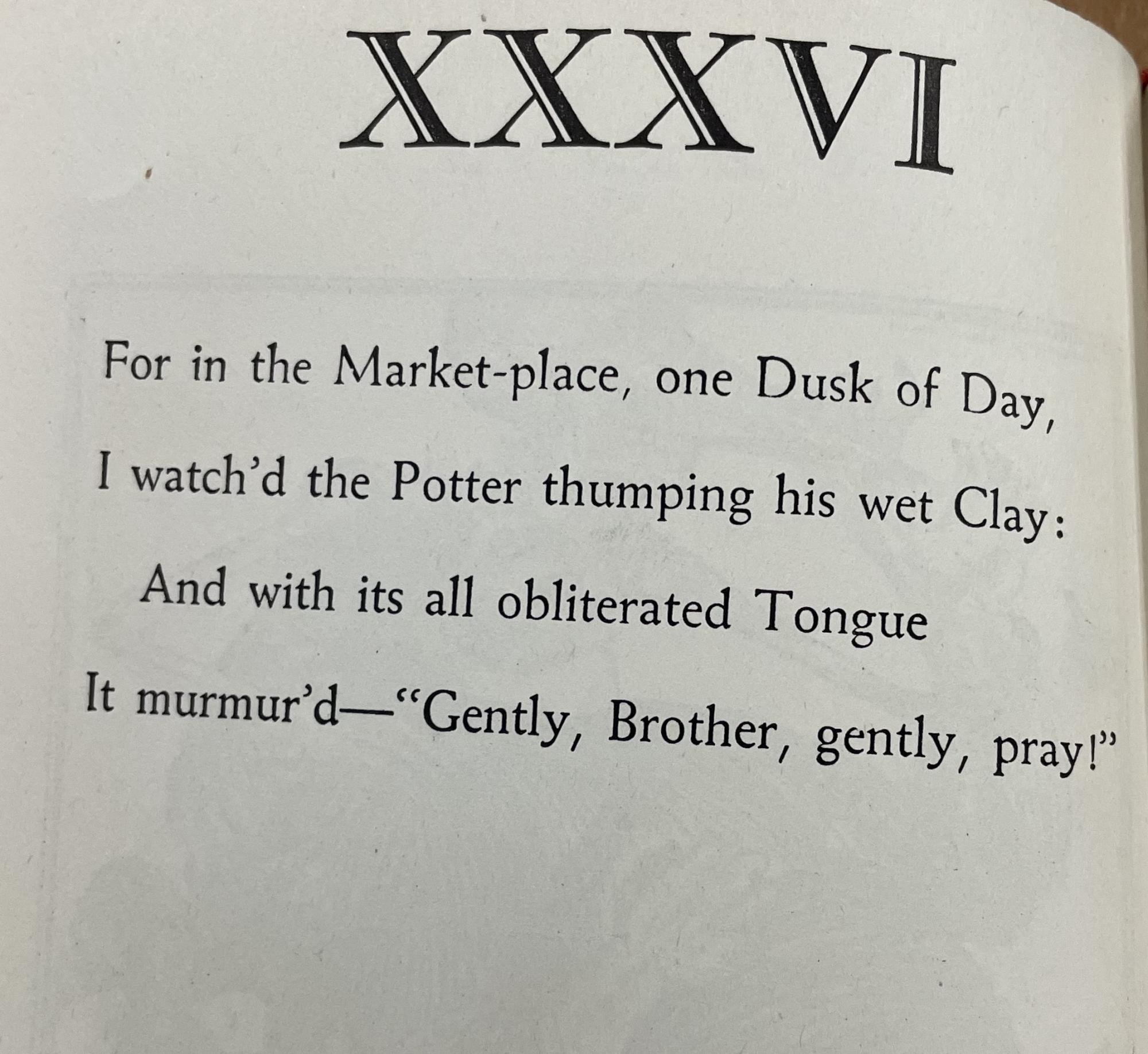Created by Jazmine Herrera-Ruiz on Sun, 05/14/2023 - 12:45
Description:
In the 1951 Shakespeare House Sullivan Edition of the Rubaiyat of Omar Khayyam, stanza 36 and the accompanying illustration by Edmund J. Sullivan work together to convey the message of the poem that life is fleeting and we should live in the moment.
The stanza describes the speaker's observation of a potter working in the marketplace, thumping the wet clay, in a manner that sounds far from gentle. The clay, with its "obliterated Tongue," murmurs to the potter to work gently. This poignant moment of connection between the potter and his creation highlights the delicacy and fragility of life, and the need to approach it with care and compassion. The second image displayed above depicts a similar scene, with a potter in the foreground working on a pot while other people bustle about in the background. There is another pot in the foreground that shows the excellent craftsmanship of the potter, it appears to be crafted with such care. The soft lines of the illustration convey a sense of peacefulness and serenity, emphasizing the stillness and focus of the potter in the midst of the chaos around him. The lines around the wet clay that the potter is working on seem less calm and more chaotic. This image is a clear depiction of the potter thumping his clay before it asked him to be gentle.
Together, the stanza and image convey the message that life is fleeting and we should appreciate the beauty in the present moment. The potter’s delicate touch and the clay’s plea for gentleness represent the fragility of human existence and the need to handle it with sensitivity. The clay’s murmurings also demonstrate the importance of treating all things with the utmost care and respect. All things that are created beautifully are handled with great care and respect, the same could be said about life. The murmuring of the clay can be seen as a reminder to all to be gentle to all manner of things around a person. The image emphasizes the importance of focus and stillness amidst the chaos of the world. Both the stanza and the image invite the reader to slow down and appreciate the present moment, and to find beauty in the small things. The words in the stanza and the details of the image work together to create this message. Although the image illustrated is before the clay asked its maker to be gentle, together the stanza and the illustration, create a moment of beauty that invites the reader to pause and appreciate the fleetingness of life.
Stanza 36 and the accompanying illustration of the 1951 Shakespeare House Sullivan Edition of the Rubaiyat of Omar Khayyam work together to convey the message of the poem that life is fleeting and we should live in the moment. The delicate touch of the potter and the murmurings of the clay in the stanza, and the stillness and focus of the potter in the illustration, emphasize the importance of treating life with care and finding beauty in the present moment.



